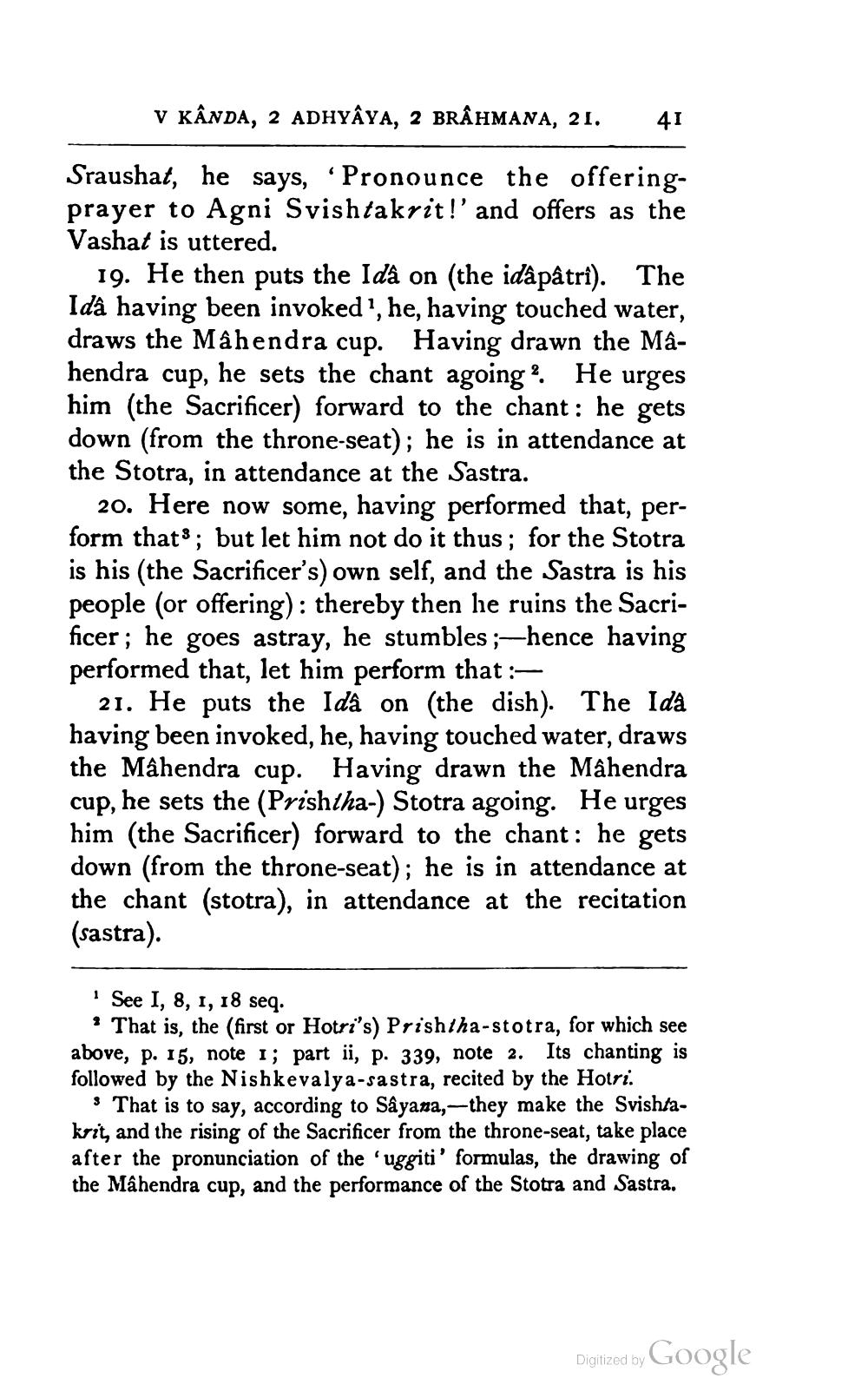________________
V KÂNDA, 2 ADHYAYA, 2 BRÂHMANA, 21.
41
Sraushat, he says, Pronounce the offeringprayer to Agni Svishtakrit!' and offers as the Vashat is uttered.
19. He then puts the Idà on (the idâpâtri). The Idå having been invoked', he, having touched water, draws the Mahendra cup. Having drawn the Mâhendra cup, he sets the chant agoing? He urges him (the Sacrificer) forward to the chant: he gets down (from the throne-seat); he is in attendance at the Stotra, in attendance at the Sastra.
20. Here now some, having performed that, perform thats; but let him not do it thus; for the Stotra is his (the Sacrificer's) own self, and the Sastra is his people (or offering): thereby then he ruins the Sacrificer; he goes astray, he stumbles ;-hence having performed that, let him perform that :
21. He puts the Ida on (the dish). The Ida having been invoked, he, having touched water, draws the Mâhendra cup. Having drawn the Mahendra cup, he sets the (Prishtha-) Stotra agoing. He urges him (the Sacrificer) forward to the chant: he gets down (from the throne-seat); he is in attendance at the chant (stotra), in attendance at the recitation (sastra).
See I, 8, 1, 18 seq. ? That is, the first or Hotri's) Prishtha-stotra, for which see above, p. 15, note 1; part ii, p. 339, note 2. Its chanting is followed by the Nishkevalya-sastra, recited by the Hotri.
That is to say, according to Sâyana,- they make the Svishtakrit and the rising of the Sacrificer from the throne-seat, take place after the pronunciation of the 'uggiti' formulas, the drawing of the Mâhendra cup, and the performance of the Stotra and Sastra.
Digitized by Google




